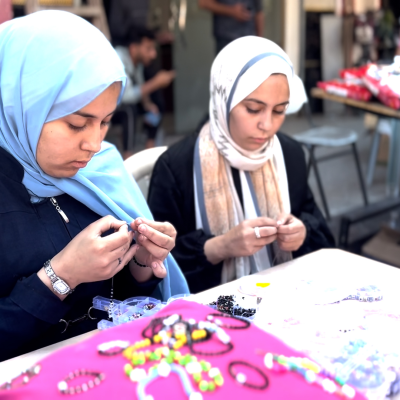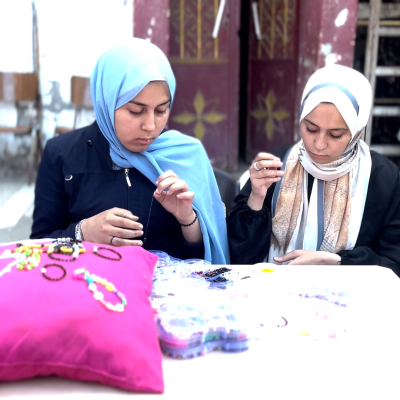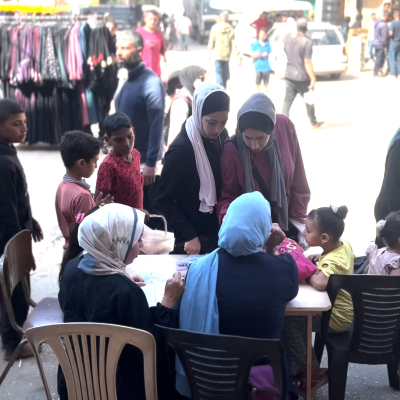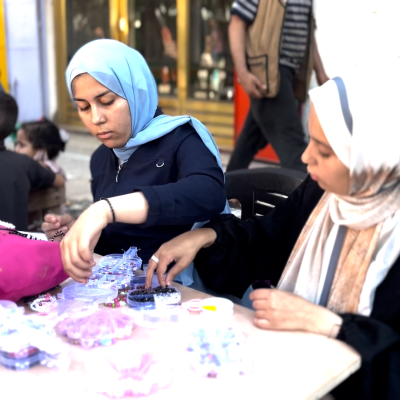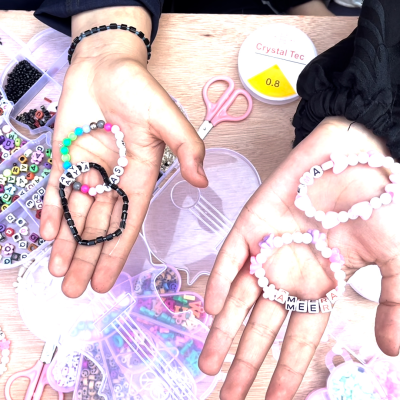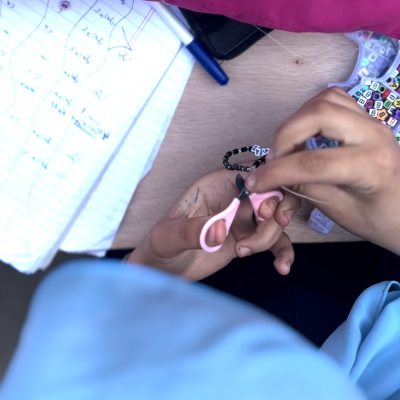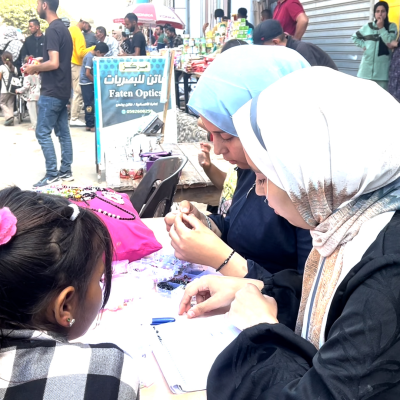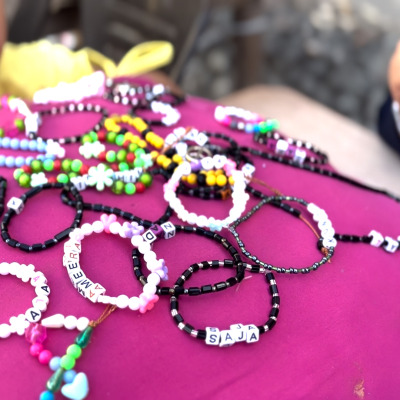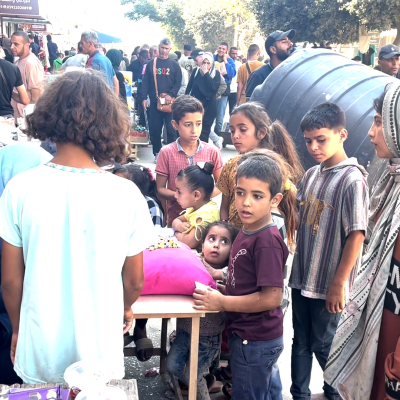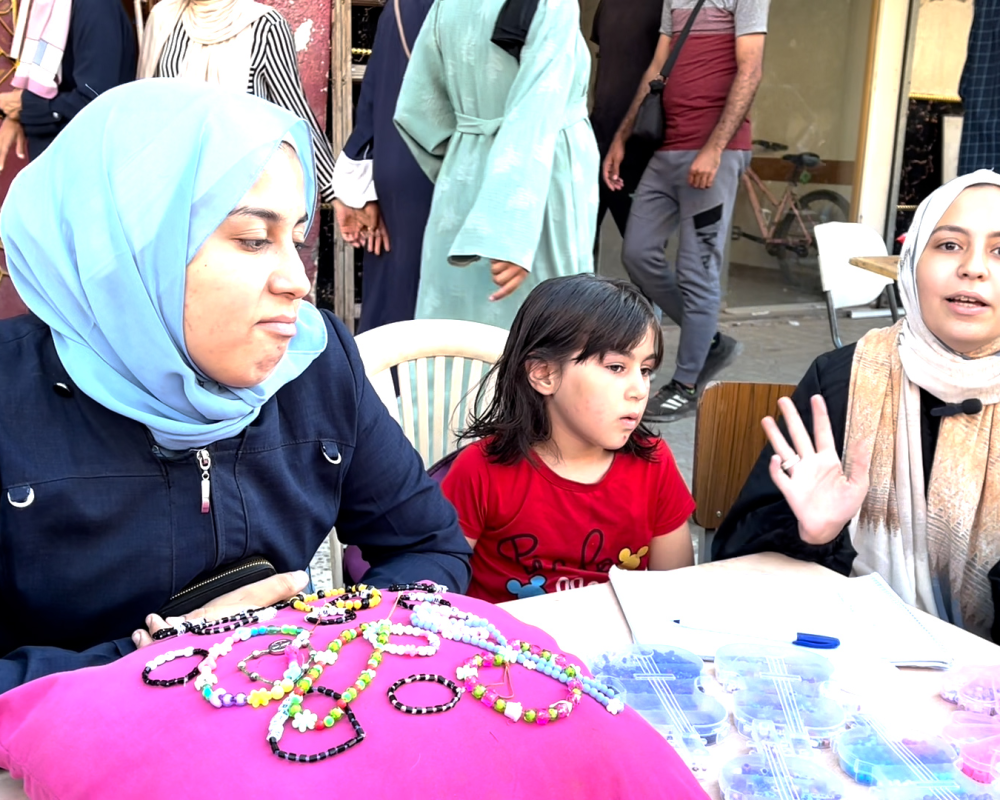
Gaza / PNN /
It was previously said that necessity is the mother of invention, and this is precisely what three displaced sisters from the ravages of war in Gaza have applied, creating a model of life amidst the difficulties of living under the genocidal war Palestinians are enduring. They have created a source of income and a dignified life by making bracelets, beadwork, and other children's accessories from simple materials.
Explaining the project idea, Dima says they sit at a stall in the market, creating bracelets and accessories directly for customers, customized according to name and age, all crafted by hand. The idea came to them after months of sitting in their place of displacement, learning to create accessories to work with.
Dima says she and her three sisters were forced to flee and escape after the Israeli occupation bombed the city of Gaza. Their ordeal began on November 13, 2023, when they left their home in Gaza and fled to the city of Deir al-Balah with their sisters Lena, aged seven, and Noor, aged seventeen, while Dima, eighteen, studies journalism at university and her middle sister studies in high school, and their youngest sister studies in elementary school.
Regarding their journey of suffering, Dima said they lived in a warehouse for several months, a room without windows, doors, or lighting. They endured difficult conditions, especially in November and December, amid freezing cold and rain entering through cracks in the warehouse, exacerbating the difficulty of their journey.
Dima, who used to live with her grandfather and grandmother along with her sisters, says she lost them without seeing them due to illnesses caused by old age. They couldn't find treatment in hospitals, which were and still are being bombed and most of them have stopped functioning.
Due to the difficult circumstances and the pursuit of survival and providing the basic necessities of life, Dima started her own project in the recent days, along with her sisters, to earn money and to provide for their family's daily needs amidst the harsh conditions of displacement.
Dima explains that the idea came from her younger sister Lena, who saw many children engaging in sales to help find a source of income for themselves and their families. Lena wondered what they could make and give her sister to sell at a stall. They thought about making beaded bracelets, bought a small quantity of materials, crafted some accessories, and set up a stall in the Deir al-Balah market where they were sold. After that, they decided to continue with the work.
Dima says that after the success and sale of everything they made, they decided to go down to the market with their sister and execute the bracelet making in front of the citizens. They noticed that this craft was not available to the public. They started making bracelets in front of the citizens who requested specific jewelry items with beads. Many citizens expressed their joy at what they were doing.
Dima says that what affected her the most psychologically, after being happy with what she was making, was a request from a family for beaded bracelets for children to wear in case they were bombed and remained under the rubble, so they could be identified. She sees in her beaded creations a model of life with its beautiful colors. She indicates that the other beaded creations she makes are diverse, used for children, women, and newborns. However, she sadly adds that some buy bracelets to identify their children if their homes are bombed.
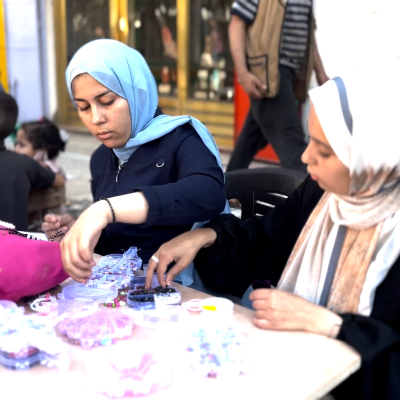
She emphasized that the idea of girls going down to the street to work in Gaza is not preferable and strange, but people accept it, especially when they know that they support themselves and spend on themselves. They know she was a first-year media student, but now after the university was bombed in the war, there are no more opportunities. Schools were also destroyed, her little sister should have been enrolled in first grade, but there are no schools, and this is the situation for all the people of Gaza.
Dima stresses that her message is the idea that people should develop themselves and not use war as an excuse to stay at home. She says we must do something new and face all obstacles and challenges, noting that this will not prevent her from continuing to strive for life.
Regarding the difficulties she faces in bead-making, Dima says that the main challenge is the closure of crossings, which has led to an increase in prices. She explains that the basic resources they bought will eventually run out, expressing hope that the crossings will reopen.
Dima, the young woman with a strong will, concludes by saying her message to citizens facing the conditions of war is to innovate and develop themselves, not to confine themselves under the siege of war. She says she herself has faced challenges, starting with the destruction of the university, but this doesn't mean she will stop; rather, she must be a contributing and positive member of society.
This story was produced as part of the "Qarib" program, implemented by the French Media Development Agency (CFI) in partnership and funded by the French Agency for International Cooperation (AFD).
